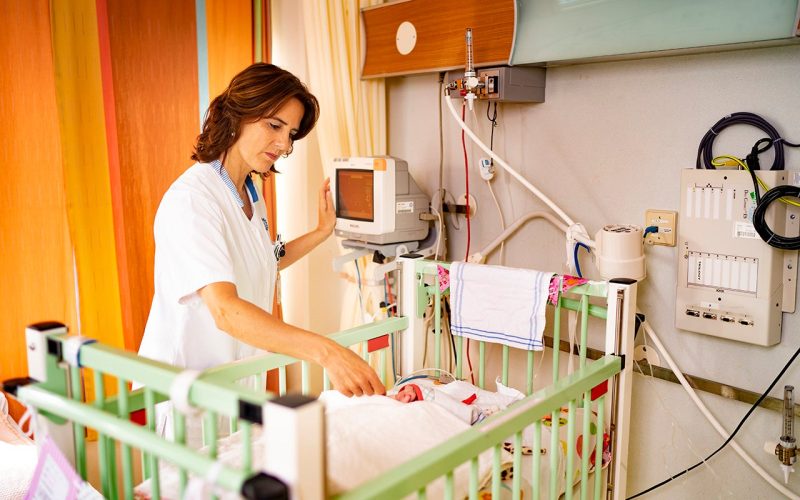Gertrud Jenster has been a nurse at the pediatric cardiac center at UMC Utrecht for some 25 years. One patient she won’t soon forget is that little girl with unexplained cardiac arrhythmias at the time.
“It was a long time ago, more than twenty years, but I still remember her well. And also her parents. The little girl was a few months old when she came to us. She had such severe arrhythmias that she kept fainting and sometimes had to be resuscitated. Our doctors at the time had no idea what was wrong with her. We had not experienced this before. It was terrible for her parents: that your child is in such a state, but no one knows what is going on.
Our doctors were in contact with colleagues in America who had seen this before. In the end, this girl turned out to have pulmonary QT syndrome. This is an inherited disorder in which the transmission of electrical stimuli across the heart muscle is disturbed. As a result, dangerous, life-threatening cardiac arrhythmias occur. It is now a well-known syndrome and appears to be a lot less rare. At the time, we didn’t know about it.
Once we knew what she had, it also became clear what treatment was needed. An internal defibrillator – an ICD – can deliver a surge of electricity when the heart falters to get it going again. This involves placing a box inside the body that is connected to the heart with electrical wires. That seemed like a solution, but the device as it existed then was too big for such a small baby’s body. She had to grow first.
Those were exciting months. She was often with us. She was such a sweetheart. We also became close with her parents. They were here day and night. Actually, the hospital was the only place where she felt safe. At home they were so worried, hardly dared to sleep for fear their daughter would fall away again. I sympathized with them so much. They were wonderful people who completely trusted – despite all the uncertainties – that we were doing everything we could to save their daughter. And we did. During the time she lay here, my colleagues and I would go outside with her and her parents into the garden whenever we could. Someone had to go with her, to keep an eye on her. So that wasn’t always possible, but we did that as often as we could.
Around the age of two, she was big enough. The ICD could be implanted. Such an operation is always a risk, especially with such a small child. Fortunately, the implantation went well. This did not immediately lead to relief for the parents. They have to learn to trust such a device. Does it do what it is supposed to do. Does it indeed give a shock when the heart stops. It did what it was supposed to do, but it was no fun. The shock she got when she had fallen out after an arrhythmia was a nasty sight. When you get a blow like that while you’re still conscious, it’s even worse. I know from adults that that feels like being shot. Try explaining that to a little one like that.
These days, fortunately, ICD devices are better. The device is smaller and more precisely adjustable, so it can also give a smaller shock if that’s enough. And although we now encounter pulmonary QT syndrome much more frequently, I have not experienced such a small child having it more often.
At the time, I sometimes wondered what we were doing to this little girl with the ICD placement. In the pediatric cardiac department, we sometimes have to deal with hopeless situations. It happens that we feel it is not ethical to treat, that you cannot do that to such a child. We discuss those situations in the department and sometimes decide – in consultation with the parents – not to treat.
With this girl it was different. Yes, she was in a bad way. But it was not hopeless. She had a functioning heart in which only the electrical control was faltering. With that ICD, she had a chance at a reasonably normal life. She had a chance for a future. The shock was enormous when I heard a little less than a year later that she had died.
